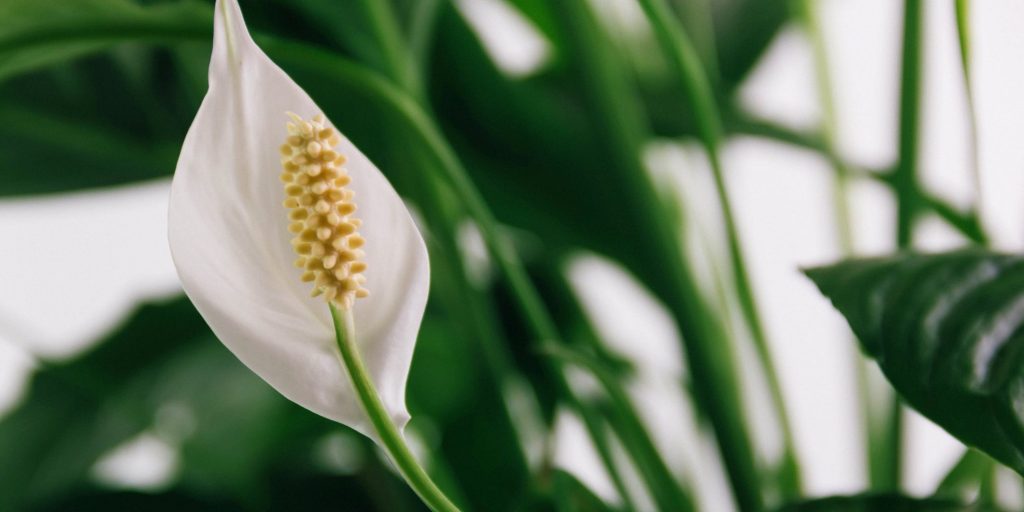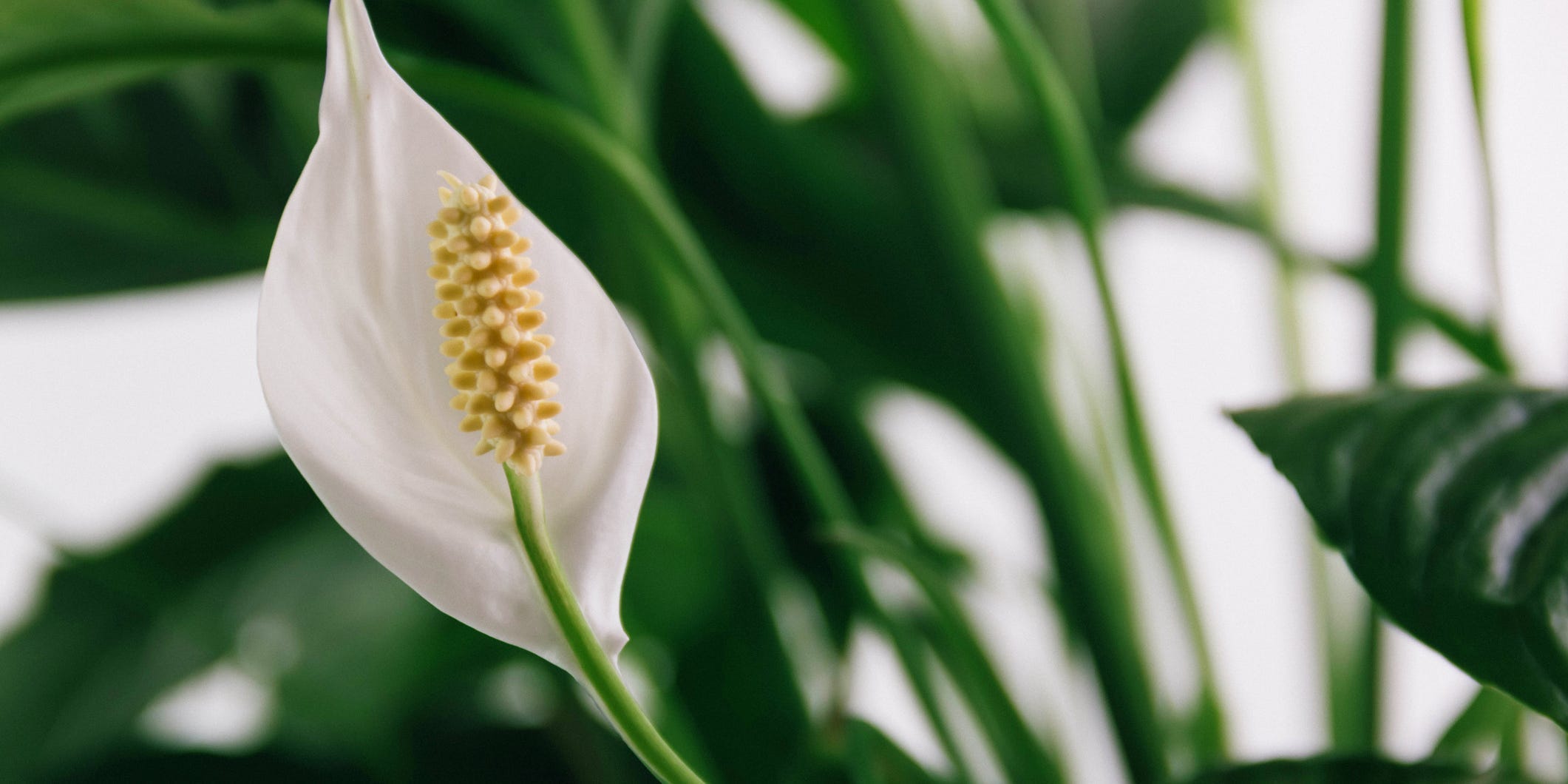
Mandrixta/Getty Images
- The tolerant and easygoing peace lily is known for its air-purifying capabilities.
- Despite their name, peace lilies are not flowers but can bloom under the right conditions.
- Peace lilies enjoy bright, indirect light and slight moisture to replicate their tropical origins.
- Visit Insider's Home & Kitchen Reference library for more stories.
The beloved peace lily (Spathiphyllum cochlearispathum) is not only one of the most popular indoor houseplants but is well regarded for its symbolic nature. Peace lilies are known to represent sympathy, peace, innocence, and prosperity.
This plant also became famous for its air-purifying capabilities after taking part in NASA's 1989 Clean Air Study. The study recorded that peace lilies can break down and neutralize toxic gases such as benzene, formaldehyde, trichloroethylene, and ammonia.
While peace lilies are flowering plants and not true lily flowers (of the Liliaceae family), their flower-esque appearance and rare, small blooms make them a favorite for plant and flower lovers.
Erin Marino, editorial lead and plant expert at The Sill, shares the best tips and tricks on how to care for the easygoing peace lily.
Identifying a peace lily
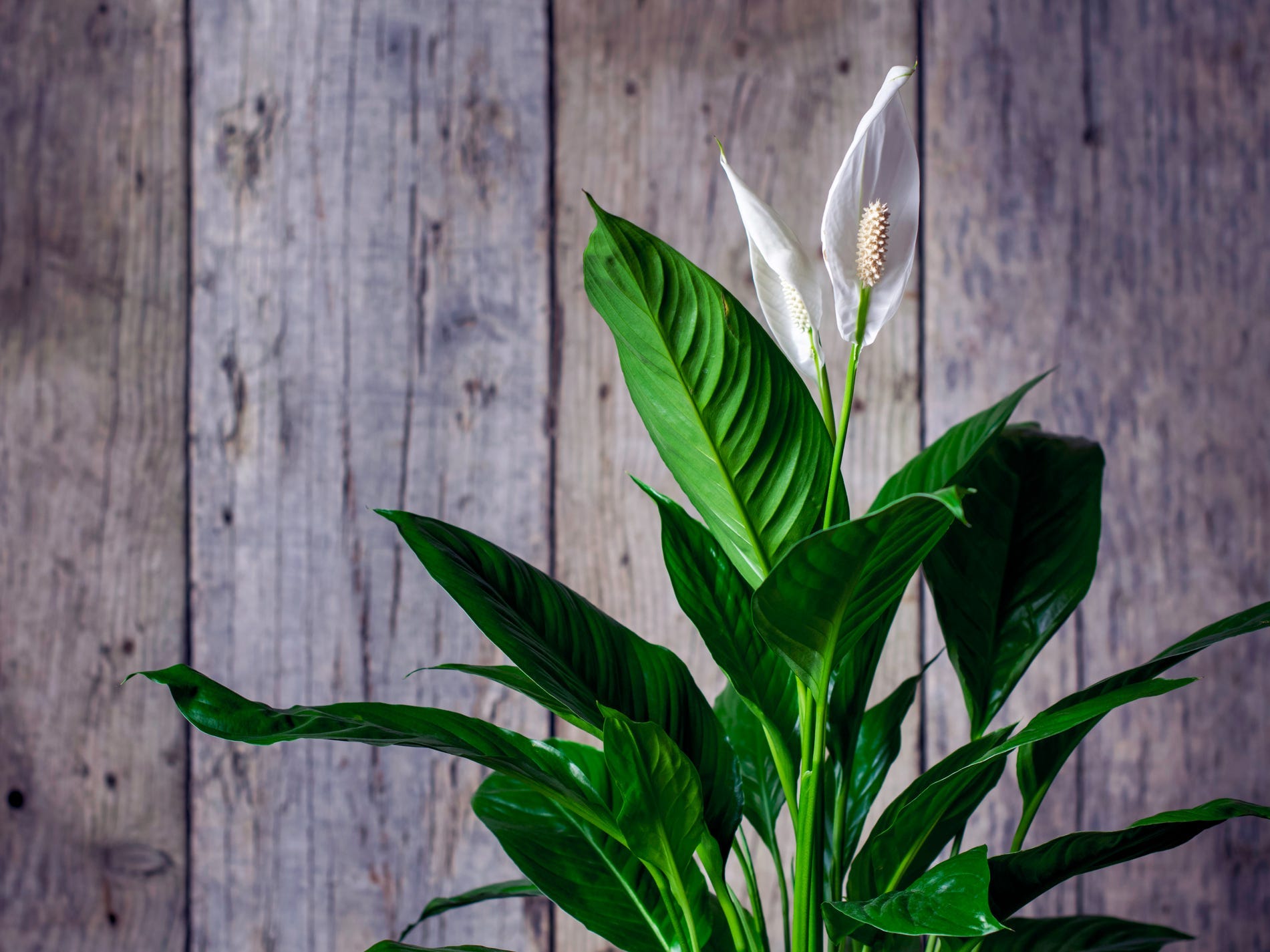
Mehmet Gökhan Bayhan/Getty Images
While there are about 40 different species of peace lilies, there is a handful that are most common including the Jetty, the Piccolino, the Patricia, and the Little Angel. Unless it is variegated (meaning it has multi-hued leaves), like the Domino or Picasso, all peace lilies share a similar look - lush, full leaves with a dark emerald hue and white, flowering leaves called spathes. These resemble the white flag of peace for which this plant is known for.
Water
Because of their tropical origins, peace lilies enjoy consistency when it comes to watering. Replicating the slightly moist environment can allow your peace lily to thrive and bloom. However, it can tolerate slightly longer droughts than other houseplants under the right conditions.
"You can water your peace lily every one to two weeks, even allowing soil to dry out between waterings," says Marino. "Expect to water more often in brighter light and less often in lower light."
Misting your peace lily once a week in addition to its regular watering routine can also give it the moisture it needs, especially when in brighter light.
Temperature and light
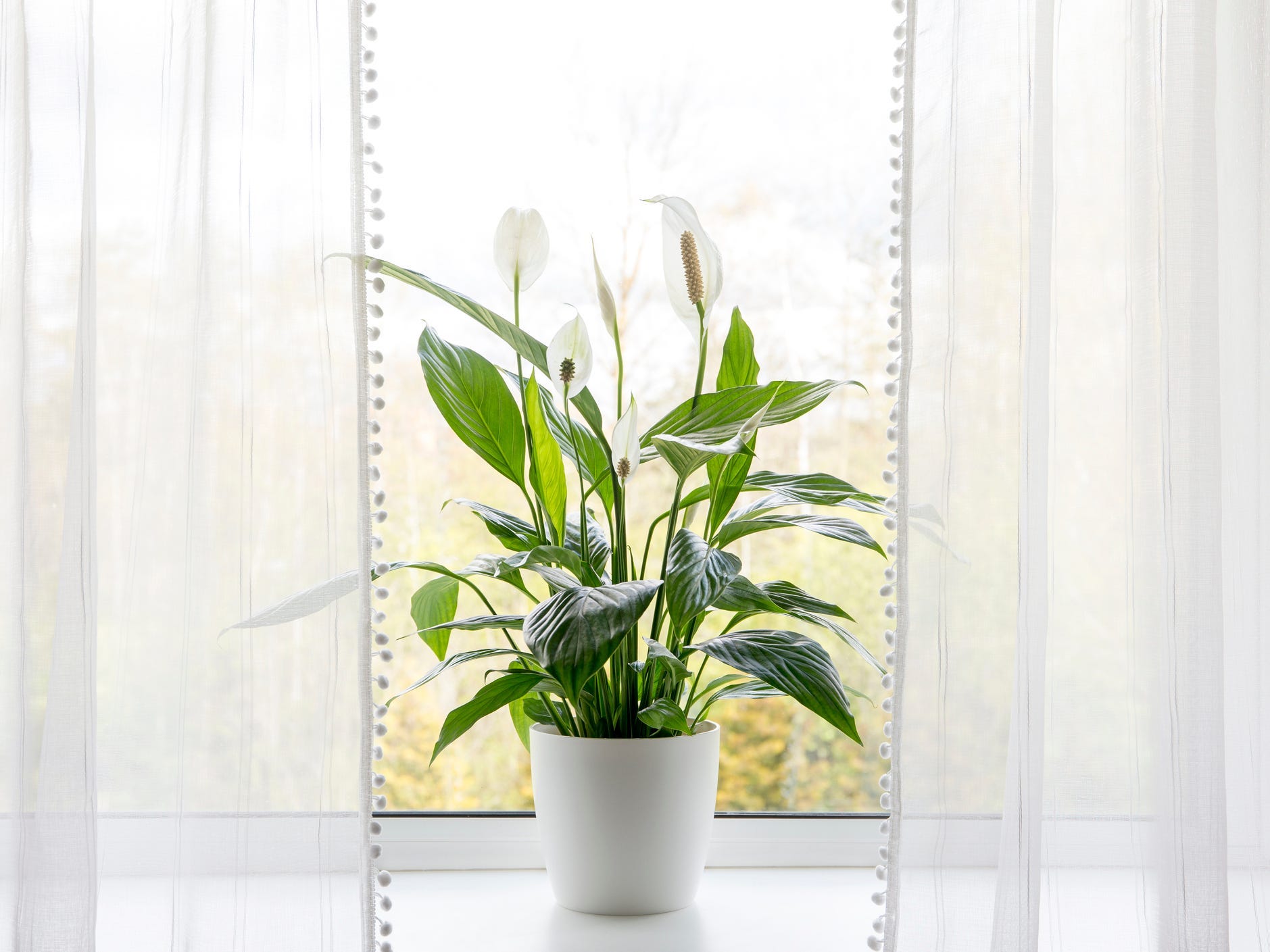
Helin Loik-Tomson/Getty Images
Peace lilies are popular among plant novices for their ability to tolerate different light conditions indoors. While Marino says that peace lilies prefer temperatures between 65 and 80 degrees Fahrenheit, they can also thrive in medium to bright indirect light indoors as well as tolerate low indirect light.
"Most houseplants are just like us - they love it 75 degrees Fahrenheit and sunny," says Marino. "Keep them away from cold and hot drafts, like AC units, heaters, or open windows and doors."
Potting and fertilizer
Peace lilies prefer a soil that can mix drainage and moisture retention. Blended potting mixes with texture are common for peace lilies, especially ones with perlite, peat moss, coir, or loam.
"Potting soil like an organic mix with compost, pine bark, coir, worm castings, and perlite can work with your peace lily," says Marino.
Most common peace lily varieties are quite large, thus needing a slightly larger pot to contain it. The most accurate way to know if your peace lily is rootbound and needs repotting is to see if roots are either coming out of the drainage hole, or rising from the surface of the soil. Peace lilies are usually repotted once a year, and repotting is also a great time to propagate your lush plant.
As for fertilizer, many peace lily owners forgo fertilizer because of the plant's hardiness and high tolerance for a variety of light and watering conditions. However, a water-soluble houseplant fertilizer diluted to half-strength can give your peace lily the little push it needs during the spring and summer.
Common problems
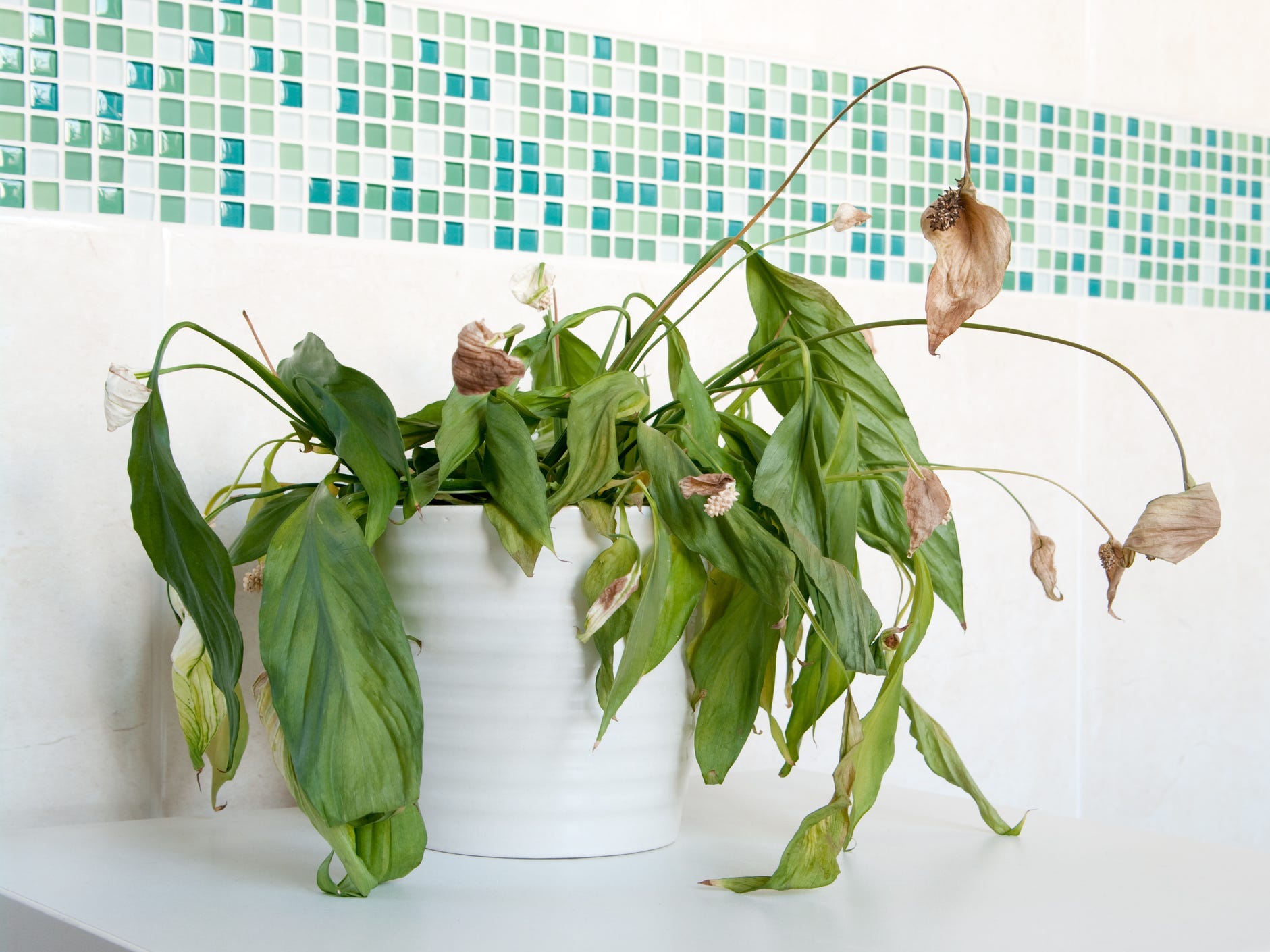
GavinD/Getty Images
Like most popular houseplants, peace lilies are susceptible to common plant pests - in particular spider mites and mealybugs - as well as problems like overwatering and underwatering.
"A wilting plant or curling leaves with dry potting mix are usually signs of under-watering," says Marino. "While yellowing leaves and mushy black stems can be signs of over-watering."
To get rid of pests, Marino recommends treating your plant weekly or bi-weekly, every three days, until there is no reinfestation.
"For mealybugs, you'll want to spot-treat visible bugs with a cotton swab or cotton pad dipped in alcohol, then spray all of the foliage down with a neem oil solution or insecticidal soap," says Marino. "For spider mites, use an insecticide that lists 'spider mites' on the label to spray down the plant."
To keep your plant healthy, Marino suggests constantly examining your plant when watering them, checking stems and under the leaves for any early signs of pests. Once spotted, quarantine your infected plant away from others to avoid pests spreading.
How to get peace lilies to bloom
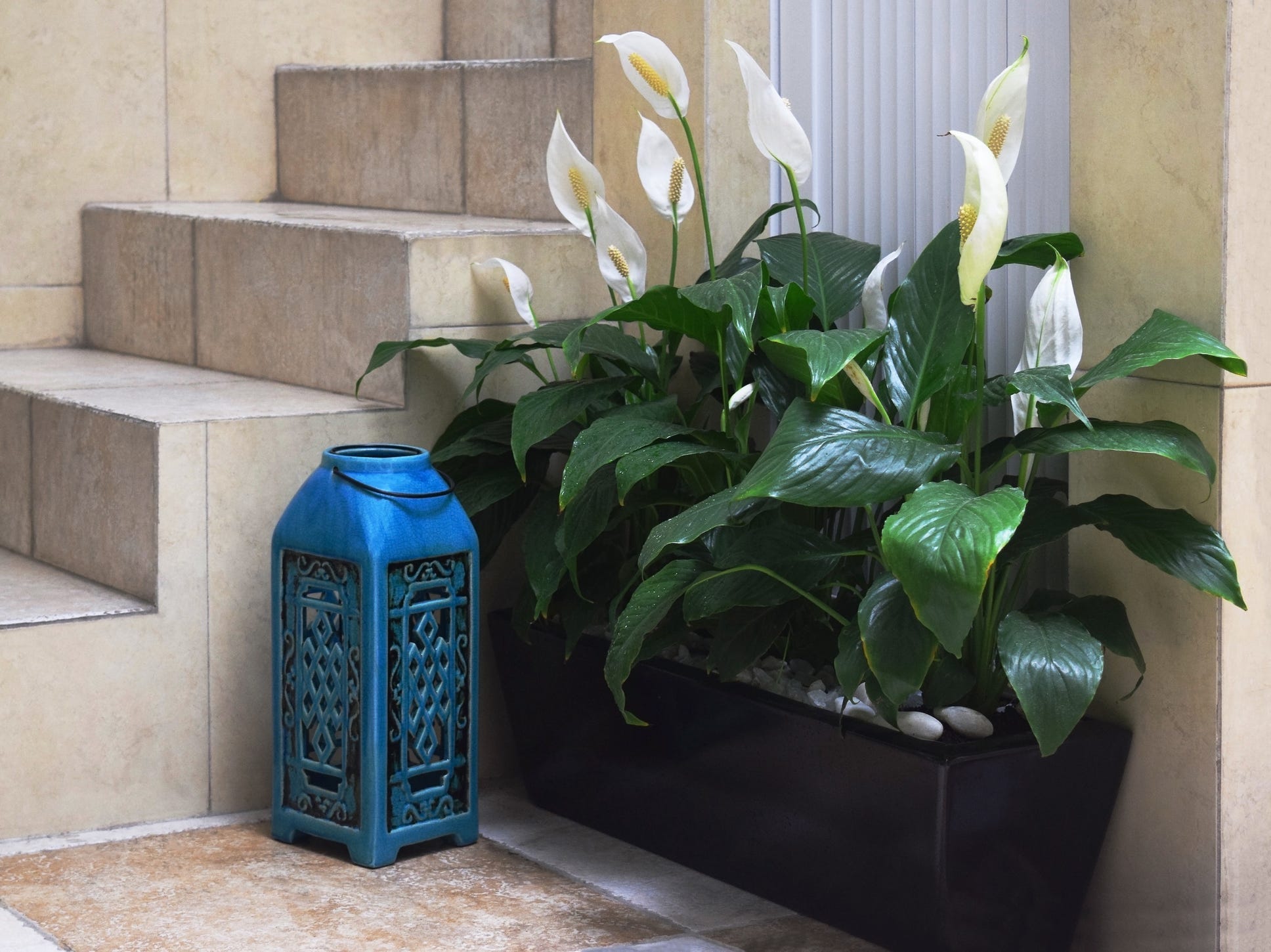
Alberto Orozco / EyeEm/Getty Images
While the plant as a whole is not a flower, peace lilies can bloom small flowers twice a year in the spring and fall under the right conditions. These blooms appear on the spiky stem of the spathe.
To get your peace lily to bloom, place it in a spot that will receive at least six hours of bright, indirect light. Water it thoroughly once a week and lightly mist the leaves to keep a consistent level of moisture.
Don't worry if your peace lily hasn't bloomed within the first year you purchased it. Getting the optimum conditions for blooming indoors can be tricky so be patient and maintain consistency.
Propagation
Unlike many houseplants, peace lilies cannot be propagated through leaf or stem cuttings. The peace lily's propagation process is quite similar to a succulent or aloe vera's, using the process of division.
"You'll want to divide sections of the mother plant up to make more plants," says Marino. "This is best done with a mature plant, as the different sections you can divide will be more obvious."
Marino recommends gently shaking off some of the older potting mix and loosen up the roots. In this step, you can also remove any soggy roots or prune extra-long roots to promote growth.
"You should start seeing different sections, or crowns, of the plant that can be gently divided from one another," says Marino. "You can separate them gently with your hands, or use a sharp clean knife or pruners. Make sure each sectioned-off baby plant has healthy foliage and a root system. Once divided from the mother plant, plant into fresh potting mix and lightly water."
Insider's takeaway
Peace lilies can be a beautiful and peaceful houseplant addition to any home or office. With the right light and temperature, consistent watering, and the correct potting soil, your peace lily can not only stay lush and healthy but may reward you with small blooms.
